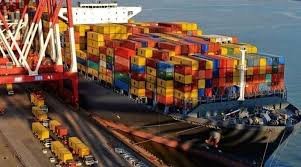Bangkok, Thailand – June 3, 2025
By Maria Kalamatas | The Logistic News
Section: World
As container shortages and chokepoints continue to plague major sea lanes, Southeast Asia is doubling down on a different kind of solution: land-based trade corridors that are drawing fresh interest from global manufacturers.
“The demand for reliable inland logistics is no longer regional — it’s global,” said Niran Sookchai, Executive Director at the ASEAN Supply Chain Council. “Overland routes now compete directly with traditional shipping lanes.”
From Concept to Execution
Just a few years ago, infrastructure connecting Vietnam, Thailand, Laos, and Cambodia was considered too patchy for scalable trade. Today, a series of revamped highways and freight rail links — backed by both Chinese and ASEAN-led financing — is moving the region toward a new logistics identity.
The East-West Economic Corridor, which runs from Da Nang in Vietnam to Mawlamyine in Myanmar, is now operating at 68% of its full capacity — a significant jump from 39% just two years ago.
Multimodal Growth with Global Implications
What makes the shift more significant is how multinational companies are adapting. Several electronics manufacturers based in Japan and South Korea have rerouted shipments through land entry points in Laos, bypassing bottlenecks at congested ports like Singapore and Port Klang.
“We’re no longer asking if overland works — we’re asking how to scale it,” said Andrea Mueller, Head of Asia Strategy at GlobalReach Freight.
To support this shift, Thailand’s customs agency has launched real-time clearance pilot programs using AI-powered monitoring, reducing truck wait times by up to 44%.
Building Beyond Borders
In parallel, digital integration between logistics operators across national lines is quietly becoming a Southeast Asian strength. Cross-border freight tracking platforms — once fragmented — are being consolidated into interoperable networks, giving shippers greater visibility.
But the true game changer may lie in regional cooperation. Last month, ministers from five ASEAN nations signed a landmark accord to eliminate double-duty taxation on goods transported via land — a move expected to reduce costs by nearly 12% on some routes.
A Strategic Detour, Not a Shortcut
This overland evolution is not simply a workaround for sea freight disruptions. It’s a signal that Southeast Asia is asserting itself as a logistics innovator — and attracting serious international attention.
“Global supply chains are no longer built around oceans alone,” said Sookchai. “Land is back in the spotlight — and we intend to stay there.”
✎ Maria Kalamatas
Senior Correspondent – The Logistic News
Section: World






















